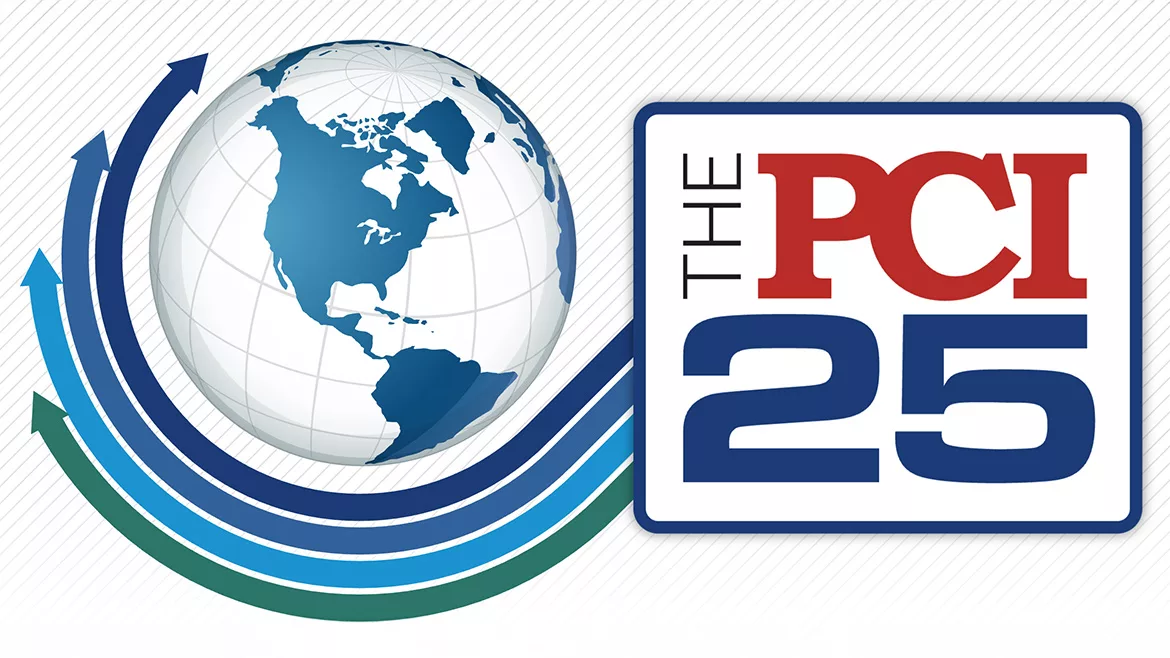A Touch Ahead
The foundation of the tactile coating used by Miamisburg, OH-based injected plastics molding/assembler Arkay Industries at its Arkay Plastics plant in Prattville, AL, is a two-part application of water-soluble paint compounds that produce a soft-touch finish. During the application process each plastic part receives an isopropyl wipe-down and an air de-staticization to remove lint. After two coats of paint and a 60-second flash time between applications, each part is moved through an infrared oven to dry. The entire painting process takes 34 minutes from loading onto the conveyer to unloading after the drying process.
The colors Arkay applies with the Red Spot product are anthracite (gray), orion (gray), and java (tan).
However, the formula’s application, color accuracy and curing success depend on precise environmental conditions of 55% relative humidity and 75ºF temperature in the twin 1,200-square-foot paint booths.
“It is temperature and humidity control in the application process, which decides between a product that’s of the utmost quality and one that is less than acceptable and produced again,” said Tim Henion, Mercedes model year 2000 program manager of Arkay Plastics, which is a two-tier injection molding producer/assembler for tier-one supplier Delphi Automotive Interior Lighting Systems, Vandalia, OH.
So far, there have been minimal scraps and remakes because of the HVAC system’s engineering success. Henion said the new dual paint booths, which cost about $250,000 to create, are state-of-the-art and unique for Arkay and the rest of the industry. Few other applicators of the soft-touch paint, which is made by Evansville, IN-based Red Spot Paint & Varnish Co., control humidity and temperature as accurately.
To maintain tight humidity and temperature tolerances of 5% or less, Arkay created a design/build team led by mechanical contractor Capital Refrigeration, Montgomery, AL; engineers from HVAC manufacturer Dectron International, Roswell, GA; manufacturers’ representative Derek Brown, president of Air Dynamics, Birmingham, AL; and consultants from Alabama Power Co., Birmingham, AL.
One of the most important factors in the application process is humidity control. The production line of instrument panels, consoles and various components are sprayed with the two-part paint process as they travel through separate 3x8-foot entrance and exit openings. These openings, which could either potentially introduce contaminated air from the surrounding 50,000-square-foot factory production floor and/or from the flash tunnels and infrared ovens further down line, complicate the HVAC design process.
When Arkay designed the application equipment for the booths, the HVAC system was designed by Brown and Bonner Patrick, P.E., president of Capital Refrigeration. The key equipment for HVAC is Dectron’s Dry-O-Tron® series model DK-450, a series typically used in office buildings, hotels and other structures requiring indoor air quality. The DK-450, which is two separate systems packaged in one unit, has a capacity of 150 tons of refrigeration, 28,800 cfm and 440 lbs./hr. of moisture removal. The system is designed to introduce 100% outside air, which is dehumidified and cooled in the summer or heated in the winter. During Alabama’s seasonably dry winter season, a Nortec Industries, Ogdenburg, NY, humidifier custom installed in the Dry-O-Tron at Dectron’s factory raises the humidity when needed. To monitor and control the room’s environment, the DK-450 uses an on-board microprocessor-based monitor/ control, the Dotics 9.While paint booth HVAC might seem like a once-in-a-lifetime project for a contractor, Capital has designed and engineered several paint booths for other manufacturers such as Lockheed Martin. Unlike the past, however, where Capital has combined different components to accomplish the HVAC task, Dectron supplied Capital Refrigeration with a complete package where all components were factory-installed and pre-tested.
“We’ve done plenty of paint booths in the past, but this is the most impressive because of the sophistication and high quality Dectron put throughout this unit from the coils on down to the doors and control system,” said Patrick, whose firm recently merged its $12-million full-line mechanical contracting operation with HVAC conglomerate Comfort Systems USA, Houston.
Capital and Henion faced challenges with airflow within the booth, however. Ongoing daily statistical studies will determine whether automated damper systems, which are monitored by airflow sensors, will be needed to maintain the engineered target velocity of 150 feet/meters. Currently, airflow is accomplished manually with one inlet and one relief damper installed in each booth’s supply duct. Regulating the current damper openings for greatest airflow efficiency was accomplished through testing/balancing metering.
Consequently, the booths are maintaining a positive pressure and excessive air is relieved into the factory by way of the relief dampers, thereby improving the general air quality of the surrounding open paint areas.
The implementation of this paint process has been an engineering success according to Henion, and should be impressive to future owners of the Mercedes 2000 SUV, which will be available later this year.
Looking for a reprint of this article?
From high-res PDFs to custom plaques, order your copy today!





